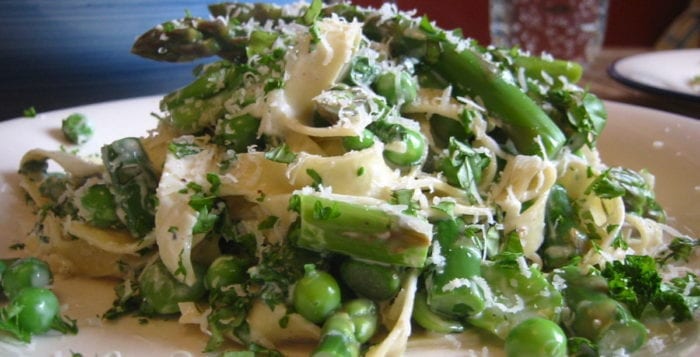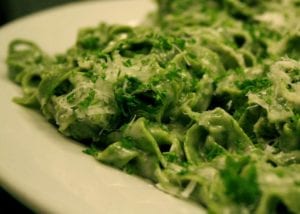Quality of life impacts are considerable
By David Dunaief, M.D.,

The media is increasingly focused on covering obesity-related issues. With this in mind, let’s start off with a short quiz to test your knowledge of obesity-related issues. The answers and research are provided below. Regardless of your quiz score, it is important to understand the research.
1. Obesity reduces life span by up to:
A) Not at all
B) 4 years
C) 8 years
D) 10 years
2. Obesity shortens healthy years of life by:
A) 8 years
B) 12 years
C) 15 years
D) 20 years
3. Food cravings can be reduced for the short term by:
A) Counting to 20
B) Tapping your finger against your head
C) Watching TV
D) Texting on your cellphone
4. Obesity can lead to the following complication(s):
A) High blood pressure
B) Diabetes
C) Cancer
D) All of the above
Are you eager to find out the answers? I hope so, because there are some very salient points I am trying to make by providing multiple choice questions. The answers are: 1. D; 2. D; 3. B; 4. D. So how did you do? One of the questions was actually similar to a question on a medical website for doctors, so don’t be too hard on yourself if you did not get them all right. Let’s look at the research.
Mortality and effect on life span
Many of you know that obesity could have an impact on development of other chronic diseases and a decrease in quality of life, but to what extent? A 2013 study indicated that almost as many as one in five deaths in the U.S. is associated with obesity (1).
In a computer modeling study, the results showed that those who are obese may lose up to eight years, almost a decade, of their life span (2). But that is only part of the results. The other, more compelling result is that patients who are very obese, defined as a BMI >35 kg/m², could lose almost two decades of healthy living. According to the researchers, this means you may have diseases such as diabetes and cardiovascular disease. However, even those patients who were obese and those who were overweight also could have reductions in life span, up to 6 years and 3 years, respectively.
There were 3,992 adults between the ages of 20 and 79 evaluated in this study. The data was taken from an NHANES database from 2003 to 2010, which looked at participants who went on to develop diabetes and cardiovascular disease. Though this is not a clinical trial, and there is a need for more study, the results are eye-opening, with the youngest and very obese negatively impacted the most.
Cancer impact
Since it is very difficult to “cure” cancer, although hopefully someday soon we will, it is important to reduce modifiable risk factors. Obesity may be one of these contributing factors, although it is hotly debatable how much of an impact obesity has on cancer development. The American Society of Clinical Oncologists (ASCO), in a position paper, supported the idea that it is important to treat obesity in the fight against cancer (3). The authors indicate obesity may make the prognosis worse, may hinder the delivery of therapies to treat cancer, and may increase the risk of malignancy.
Also, possibly reinforcing ASCO’s stance, a study suggested that upward of a half-million cases of cancer worldwide were related to being overweight or obese, with the overwhelming concentration in North American and Europe (4).
Possible solutions
A potential counterweight to both the reductions in life quality and life expectancy may be the Mediterranean diet. In a published analysis of the Nurses’ Health Study, results show that the Mediterranean diet helped slow shortening of the telomeres (5). Repeat sequences of DNA found at the end of chromosomes, telomeres, shorten with age; the shorter the telomere, the shorter life expectancy.
Thus, the Mediterranean diet may decrease occurrence of chronic diseases, increase life span and decrease premature mortality — hence, the opposite effect of obesity. In fact, it may help treat obesity, though this was not mentioned in the study. Interestingly, the effects of the Mediterranean diet were on a dose-response curve. The greater the adherence to the diet, rated on a scale of 0 to 9, the better the effect. Those who had an increase in adherence by three points saw a corresponding decrease in telomere aging by 4.5 years. There were 4,676 middle-aged women involved in this analysis. The researchers believe that the anti-inflammatory and antioxidant effects could be responsible for the diet’s effects.
According to an accompanying editorial, no individual component of the diet was identified as having beneficial effects by itself, so it may be the diet as a whole that is important (6).
Short-term solutions
There are easy-to-use distraction tactics that involve physical and mental techniques to reduce food cravings. These include tapping your foot on the floor, staring at a blank wall and, yes, alternating tapping your index finger against your forehead and your ear (7). The forehead and ear tapping was most effective, although probably most embarrassing in public. Among mental techniques, seeing pictures of foods that were unhealthy and focusing on their long-term detriments to health had the most impact (8). All of these short-term distractors were done for 30 seconds at a time. The results showed that in obese patients they indeed decreased food cravings.
Exercise impact
I have written about exercise and that it does not lead to fat percentage loss in adults. Well, before you write off exercise for fat loss, it seems that adolescents may benefit from exercise. In a randomized controlled trial, the gold standard of studies, results show that those in the resistance training group alone and those in a combined resistance and aerobic training group had significantly greater percentages of fat loss compared to a control group (9).
However, the aerobic group alone did not show a significant change in fat percent versus the control. There were 304 study participants, ages 14 to 18, followed for a six-month duration, and results were measured with MRI. The reason that resistance training was effective in reducing fat percentage may have to do with an increase in muscle mass rather than a decrease in actual fat. Still, exercise is important. It doesn’t matter if it decreases the fat percentage; it is still getting you to the goal.
Obesity can have devastating effects, from potentially inducing cancer or worsening it, to shortening life expectancy and substantially decreasing quality of life. Fortunately, there may be ways to help treat obesity with specific lifestyle modifications. The Mediterranean diet as a whole may be an effective step toward decreasing the burden of obesity and reducing its complications. Kids, teenagers specifically, should be encouraged to “Play 60,” as the NFL has encouraged, but also to do some resistance training. As we mentioned, there are simple techniques that may help reduce short-term food cravings.
References: (1) Am J Public Health. 2013;103:1895-1901. (2) The Lancet Diabetes & Endocrinology, online Dec. 5, 2014. (3) J Clin Oncol. 2014;32(31):3568-3574. (4) The Lancet Oncology. online Nov. 26, 2014. (5) BMJ. online Dec. 2, 2014. (6) BMJ 2014;349:g6843. (7) Obesity Week 2014 abstract T-2658-P. (8) Obesity Week 2014 abstract T-3023-OR. (9) JAMA Pediatr. 2014;168(11):1006-1014.
Dr. Dunaief is a speaker, author and local lifestyle medicine physician focusing on the integration of medicine, nutrition, fitness and stress management. For further information, visit www.medicalcompassmd.com or consult your personal physician.































